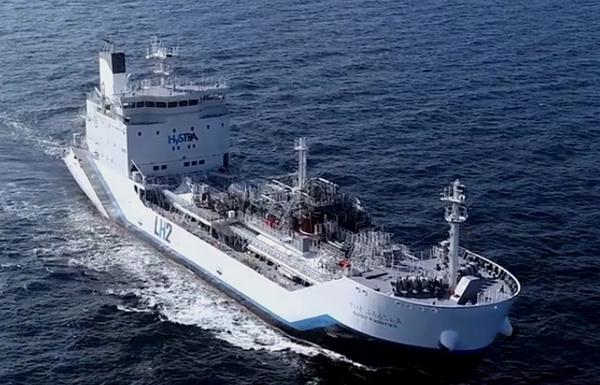Small fire on world's first liquid hydrogen carrier voyage
An investigation by the Australian Transport Safety Bureau (ABTS) has found that a faulty valve was responsible for a brief fire incident on the maiden voyage of Suiso Frontier, the world’s first liquified hydrogen (LH2) carrier.
 PHOTO: Suiso Frontier, the world’s first LH2 carrier. ABTS
PHOTO: Suiso Frontier, the world’s first LH2 carrier. ABTS
The ABTS had launched an investigationlast year after a worker spotted a yellow flame coming from the Suiso Frontier’s gas combustion unit’s exhaust while the ship was at berth in the Port of Hastings, Victoria, on 25 January. The investigation found that an incorrectly fitted electrical solenoid valve led a failure and a brief flame propagation.
While no subsequent fire or explosion, and no injuries or damage were reported, the incident highlights the risks in carrying liquefied hydrogen, a widely proposed zero-emission alternative fuel for shipping and other sectors.
Following the incident, the manufacturer of the gas combustion unit, Saacke, has fitted switches on the air fan discharge damper to keep the damper position in check. The unit has also been programmed to stop if defects are detected.
Some shipping executives have argued that safety incidents with liquefied hydrogen and ammonia - another fuel gaining popularity as a potential alternative for shipping - could potentially be more dangerous than conventional fuels.
“Don't be fooled when people start talking to you about hydrogen. It's a very important part of the energy change equation, but it's not simple, this is much, much more challenging than LNG,” Ardmore Shipping senior executive Mark Cameron told an audience at the Nautical Institute Conference in Singapore last September.
Considering liquefaction temperatures, hydrogen turns into liquid at temperatures of around -252.8°C, which is much lower than the -161.5°C needed for natural gas.
By Debarati Bhattacharjee
Please get in touch with comments or additional info to news@engine.online





